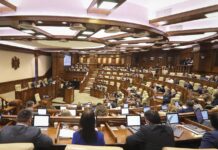the Polish scientists examined cores taken on the Baltic coast of this country, and found abundant evidence of major floods, including the record described in ancient sources of a tsunami, 1497.
About opening reports Nauka w Polsce. Samples for laboratory study, researchers selected in the Baltic reserve Machalinski Oka. The result was discovered the unique tracks left by numerous sea floods. The age of the oldest of them can be up to 2000 years.
Places for sampling of the cores was determined by means of satellites. In particular, the researchers visited an area called darłowo. Historical sources report that in 1497 to the area devastated by the tsunami. It is believed that a catastrophic storm was caused by the earthquake in Sweden.
“In some studied samples show traces of this event, says co-author Dr. Karolina Leszczynski from the University of Adam Mickiewicz. Analysis of cores was conducted on the flat shores, covered with meadows, at the base of a peat. Between the peat deposits was discovered pebbles and sand that spread as a result of catastrophic marine floods.”
But to differentiate the sand and gravel from sand and pebbles from the usual beaches, scientists have studied the mineralogical composition as well as shape and size. The results proved that the studied samples were put on shore Maritime disasters.
By the way, the earliest traces of a major marine flooding today lie at a depth of five meters from the surface of the earth. They are all far removed from the sea – a few tens or even few hundred meters.
“for Example, we were able to detect “write” about the intense storms that may have occurred 1500-2000 years ago in the area of the modern reserve Machalinski Oki”, says Dr. Leszczynski.
Similar studies on this scale in Europe was conducted. The results of the analysis will be able to use in their work not only archaeologists, but also investors and local authorities. When planning the construction of objects, they can now consider “lessons learned”, knowing exactly where was the marine and coastal floods where infrastructure may be most vulnerable.






































